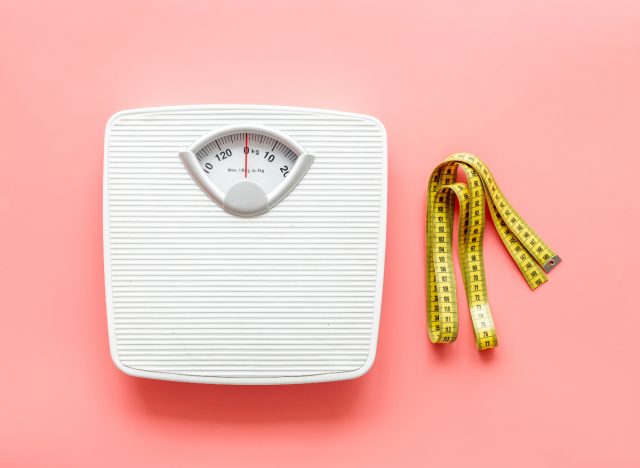There is no shortage of ways to lose weight, from low-cal shakes to weight-loss injections. Nowadays, social media has emerged as a hotbed of ideas and weight-loss trends that quickly go viral. The latest craze to grace social media feeds is ‘Oatzempic.’
Oatzempic, a play on Ozempic, is an oat-based weight-loss drink making waves on TikTok that has users claiming it can shed 40 pounds in two months, prompting others to take up the ‘Oatzempic challenge.’
But is it true that Oatzempic helps you quickly drop those unwanted pounds? We talked to registered dietitians to get their thoughts on this new TikTok trend. Keep reading to learn what they have to say, and when you’re done check out Can Eating Oatmeal Help You Lose Weight?
What is Oatzempic?
Oatzempic is the latest weight-loss craze on TikTok. It’s a homemade drink consisting of 1/2 cup of rolled oats, 1 cup of water, and juice from half a lime. Users blend the ingredients and consume the oat drink in place of a meal.
In a TikTok video with over 1.5 million views, one user comments on the taste of the drink on her first day of the challenge, likening the flavor to chalky water with bits of lime. Despite its unappealing taste, she continues the challenge, and on day six tells her followers she’s lost 5.9 pounds.
Although it sounds like a creative weight loss drink, Dalia Beydoun, MS, RD says Oatzempic is nothing more than “oat milk marketed as a weight loss hack on TikTok.”
Fans of Oatzempic say it rivals Ozempic in its weight-loss efficacy but without the high cost. Ozempic is a prescription medication that lowers blood sugar in people with Type 2 diabetes. According to the FDA, a decrease in appetite is a side effect of Ozempic and it’s prescribed off-label for weight loss.
Destini Moody, RD, CSSD, LD, at Top Nutrition Coaching, says she only recently heard about Oatzempic. Though not a fan of diet fads, Moody says, “I’m mostly just impressed with how people come up with this stuff.”
How TikTok users lose weight drinking Oatzempic
TikTokers taking the Oatzempic challenge report significant weight loss, sometimes up to a pound per day, attributing it to the drink’s satiating effect, which curbs their appetite.
Beydoun explains, “Oats contain a healthy dose of fiber which helps with fullness and satiety, potentially limiting snacking during the day.” She goes on to say, “The combination of fiber and water in this drink can help with regular bowel movements, which may also lead to weight loss, but not necessarily fat loss.”
With approximately 150 calories per serving based on the recipe of ½ cup of rolled oats and lime juice, Oatzempic qualifies as a low-calorie beverage. Like many other fad diets, it supports weight loss by helping you reduce calorie intake.
“You can lose weight with Oatzempic if it’s replacing a higher-calorie meal,” says Beydoun.
Can Oatzempic help you reach your weight goals?

Moody acknowledges the potential for weight loss with Oatzempic “if implemented in a certain way.” However, she doesn’t recommend Oatzempic for weight loss. “The sum of the parts of Oatzempic does not make a balanced meal or an adequate meal replacement,” she says.
Other than the fiber from the oats, which is roughly 8 grams, Oatzempic isn’t a nutrient-rich drink. According to Moody, Oatzempic doesn’t have enough protein or other nutrients like antioxidants from fruits or vegetables. “Sorry, lime juice doesn’t cut it,” she says.
“Over the long-term, drinking Oatzempic instead of full meals can lead to malnourishment with weight loss,” Moody warns.
Even if you did lose 40 pounds following the Oatzempic challenge, you may not keep it off. “Healthy, sustainable weight loss is usually around 1 to 2 pounds per week, not 5 pounds,” remarks Beydoun.
Eating oats for breakfast is a good way to start the day. “To make it more balanced, I recommend adding some protein like protein powder or Greek yogurt, a healthy fat such as peanut butter, peanut butter powder, or chia seeds, and some color like blueberries, banana, or spinach,” suggests Beydoun.
Or, you can cook your oats and eat them out of a bowl, which is “probably more pleasant to consume,” Moody adds.

